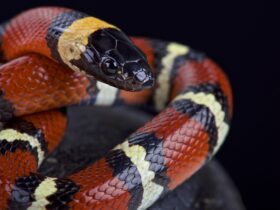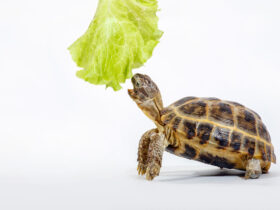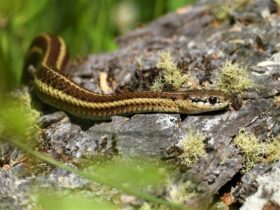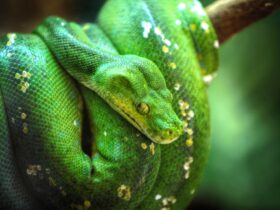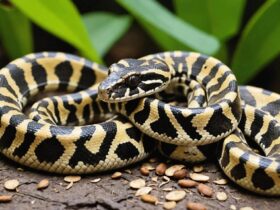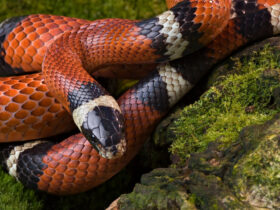So, you’re thinking about getting a ball python as a pet. They’re pretty chill, don’t get too big, and look amazing with all their different colors and patterns. But, like any pet, they need the right care to stay happy and healthy. In this guide, we’ll break down everything you need to know, from setting up their tank to feeding and handling them. Let’s get started!
Understanding Ball Python Behavior
Natural Habitat and Adaptations
Ball pythons hail from the warm regions of West and Central Africa. They’re found in places like grasslands and forests, sometimes even near farms. These snakes adapt well to different environments, which is why they’ve become such popular pets. Interestingly, while they’re known as ground-dwellers, they also spend time in trees. This mix of habitats helps them hunt effectively, whether on the ground or up above.
Common Behavioral Traits
Ball pythons are known for their calm nature. They often curl up into a tight ball when they feel threatened, which is how they got their name. They’re mostly active at night, especially around dawn and dusk. As ambush hunters, they wait patiently for prey like rodents to pass by before striking. This patient hunting style is a big part of their charm.
Signs of Stress in Ball Pythons
Recognizing stress in your ball python is crucial for their well-being. Look for signs like constant hiding, refusal to eat, or excessive hissing. If your snake is frequently curling into a ball, it might be feeling stressed. Providing a stable environment with proper temperature and humidity can help reduce stress. Always make sure your snake feels safe and secure in its habitat.
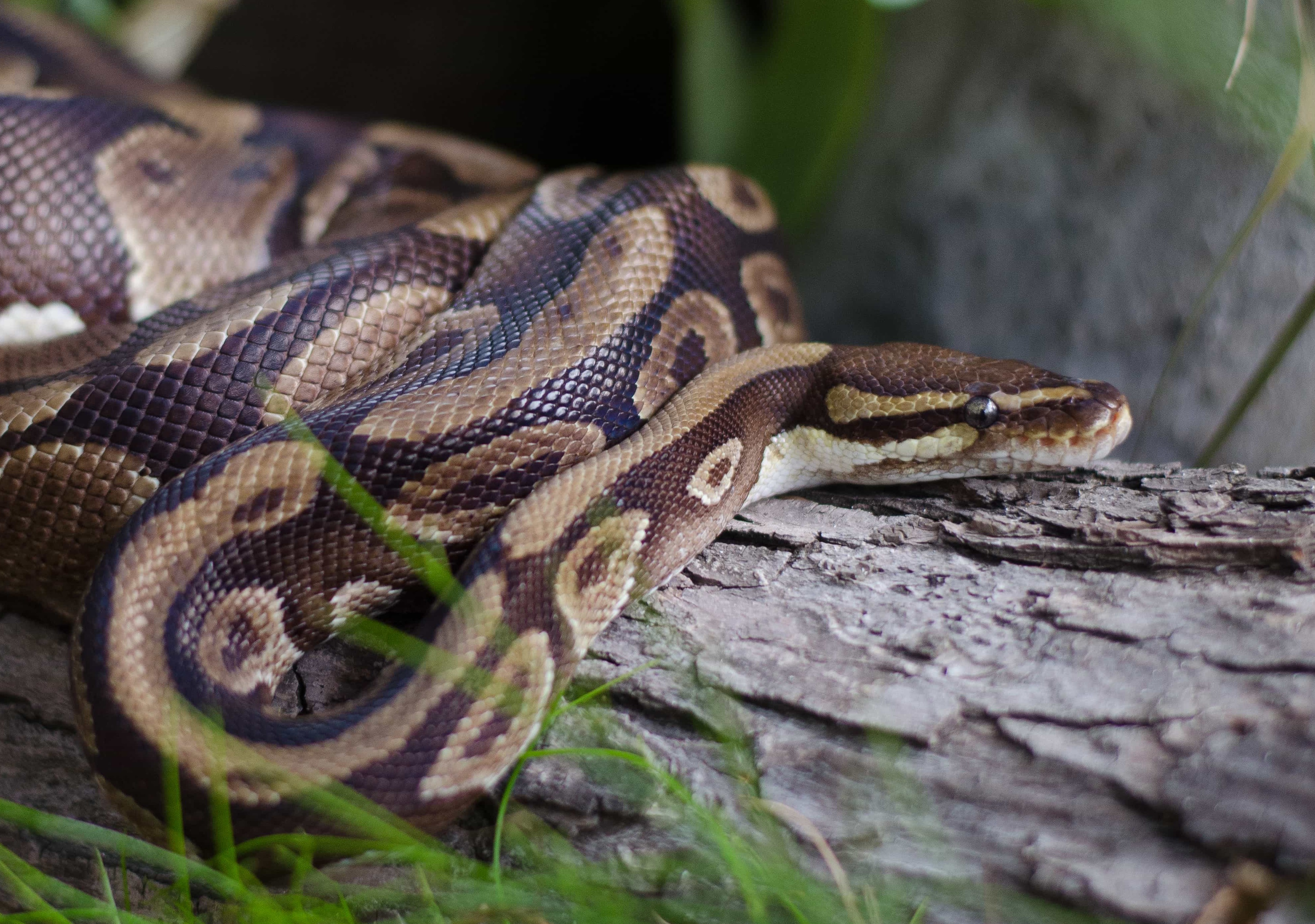
Setting Up the Perfect Ball Python Habitat
Creating a comfortable and safe environment for your ball python is crucial for its well-being. Let’s break down the essentials for setting up the perfect habitat.
Choosing the Right Enclosure
When it comes to selecting an enclosure, size matters. Adult ball pythons need a space that’s at least 2 feet long. Glass or plastic reptile tanks are popular choices because they offer good visibility and are easy to clean. Make sure the enclosure has proper ventilation to keep the air fresh. Also, include snug hiding spots and some branches for climbing. These elements mimic their natural environment and help them feel secure.
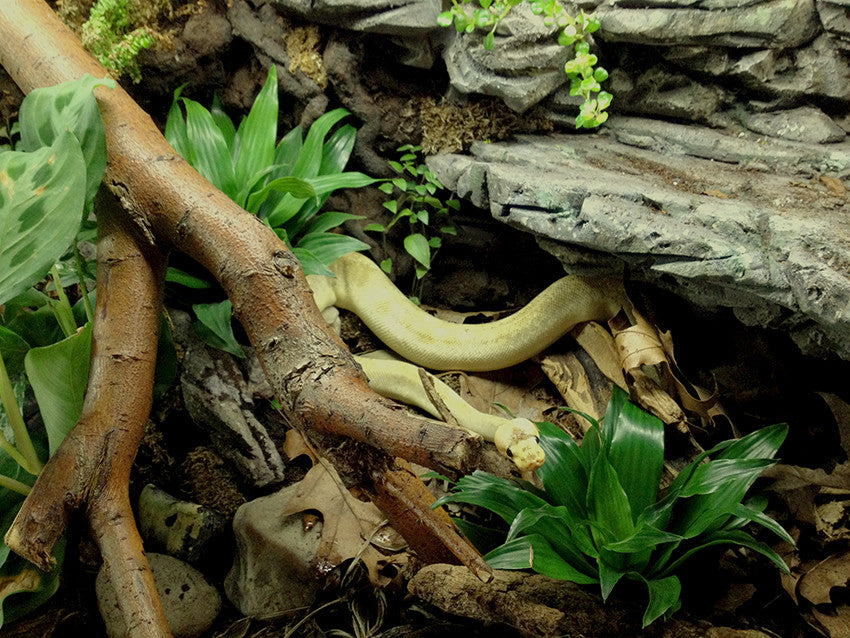
Temperature and Humidity Requirements
Ball pythons are native to warm climates, so maintaining the right temperature is key. Use an under-tank heating pad or a radiant heat panel to create a warm spot of about 88-92°F. The rest of the enclosure should stay between 78-82°F. Humidity is another important factor. Aim for 60-70% humidity, which can be achieved with a hygrometer, large water bowls, and regular misting. You can also use substrates like cypress mulch or coconut fiber to help retain moisture.
Decor and Enrichment for Ball Pythons
Decorating your ball python’s habitat isn’t just about aesthetics; it’s about enrichment too. Include items like rocks, branches, and artificial plants to create a stimulating environment. These additions encourage natural behaviors like exploring and climbing. Adding these elements can greatly enhance your python’s quality of life.
A well-designed habitat not only meets your ball python’s physical needs but also supports its mental health by providing opportunities for exploration and activity.
By following these steps, you’ll create a cozy and enriching home for your ball python, ensuring it thrives in its new environment.
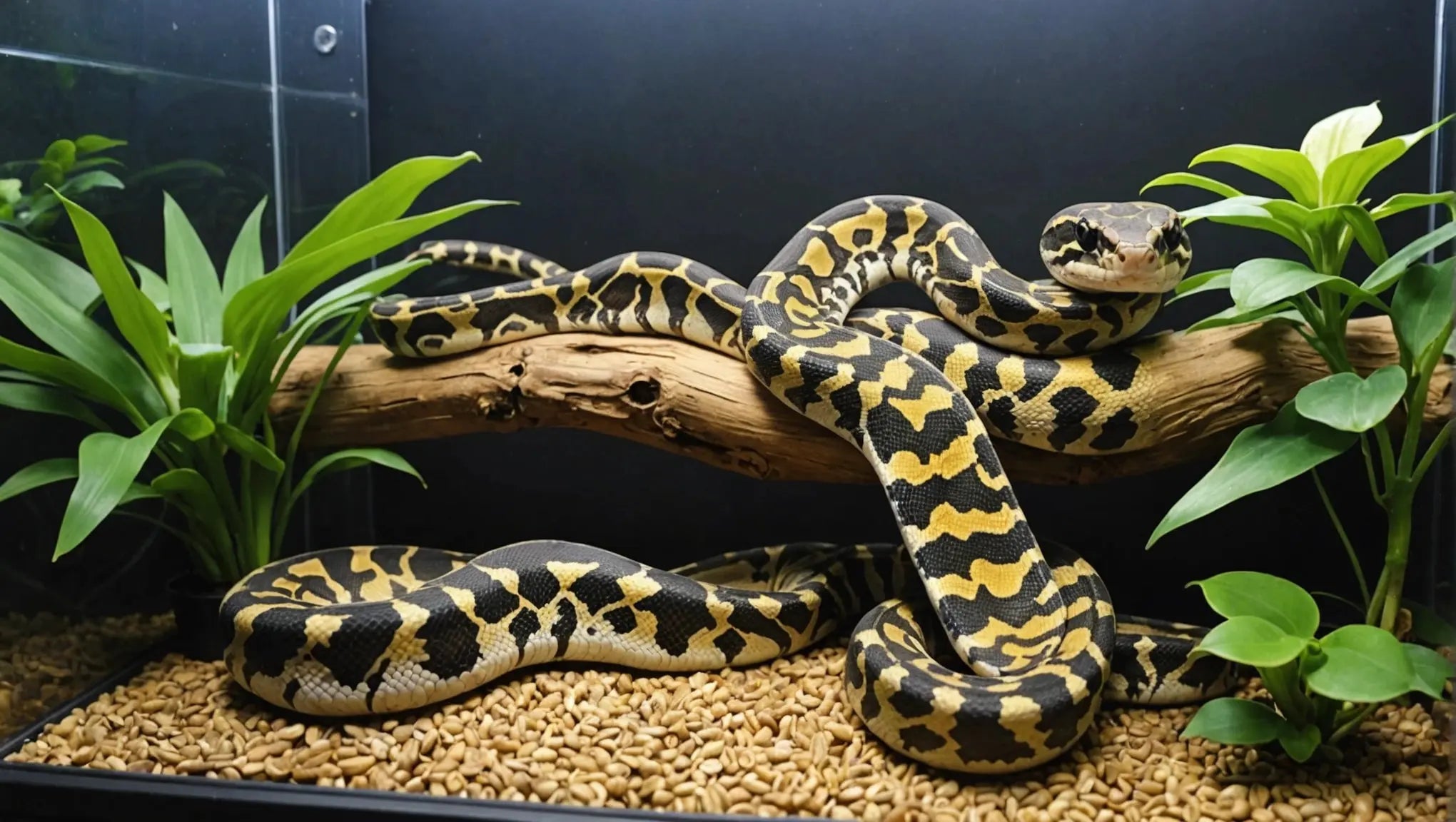
Feeding Your Ball Python
Dietary Needs and Feeding Schedule
Ball pythons are carnivores, and their diet mainly consists of rodents like mice and rats. It’s best to feed them frozen-thawed prey rather than live animals to avoid potential injuries. For adults, offer food every 1-2 weeks, while younger snakes might need feeding more frequently. Always choose prey no larger than the thickest part of the snake’s body to prevent choking or regurgitation.
Handling Feeding Challenges
Sometimes, ball pythons can be picky eaters. If your snake refuses to eat, try offering a different type of rodent or slightly warming the prey to mimic live conditions. Ensure the feeding environment is stress-free. If your python consistently refuses food, consult a vet to rule out health issues.
Safe and Unsafe Foods
Ball pythons should never be fed live prey due to the risk of injury. Stick to a diet of appropriately sized rodents. Avoid feeding them anything other than rodents, as other foods can harm their digestive system. Ensure fresh water is always available and use feeding tongs to safely offer food without risking a bite.
Proper feeding practices are crucial for your ball python’s health and longevity. Monitor their weight and adjust feeding frequency as needed to maintain a healthy snake.
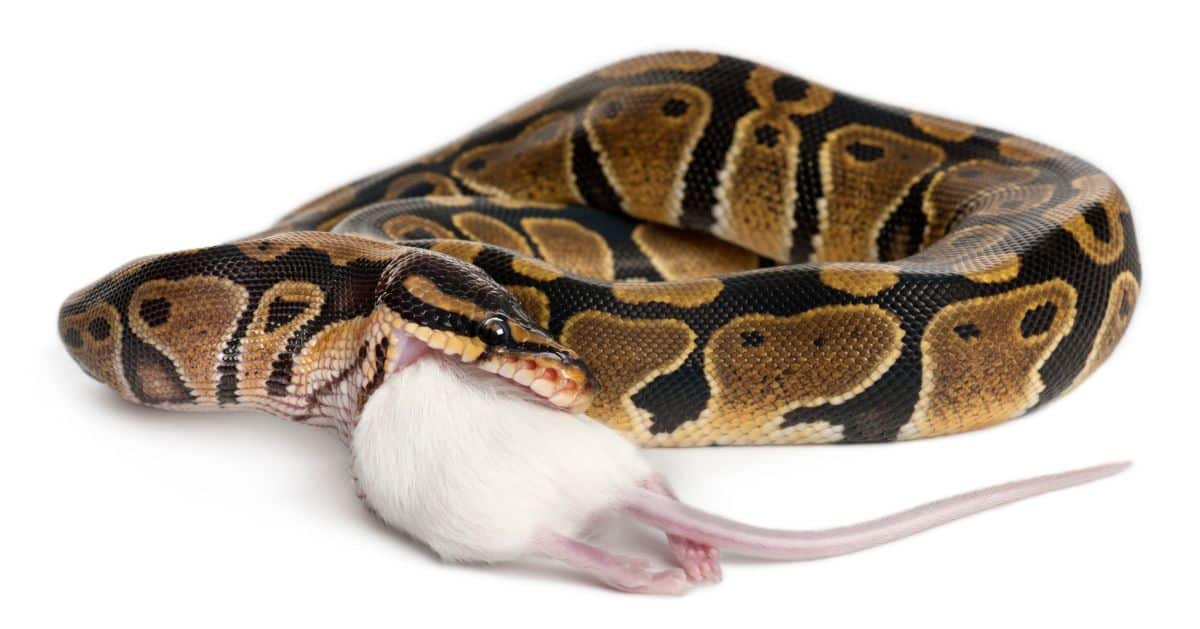
Handling and Bonding with Your Ball Python
Proper Handling Techniques
When it comes to handling your ball python, gentleness is key. These snakes are generally docile, but they appreciate a calm approach. Start by washing your hands to remove any scents that might confuse your python. Slowly reach into the enclosure and support its body fully, avoiding quick movements that might startle it. Remember, it’s best not to handle your python right after feeding or during shedding, as this can cause stress.
Building Trust with Your Python
Building trust with your ball python takes time and patience. Begin by handling it for short periods, gradually increasing the duration as it gets more comfortable. Consistency is crucial—try to handle your python a few times a week. This routine helps it get accustomed to your presence and touch. Over time, you’ll notice your python becoming more relaxed and curious during handling sessions.
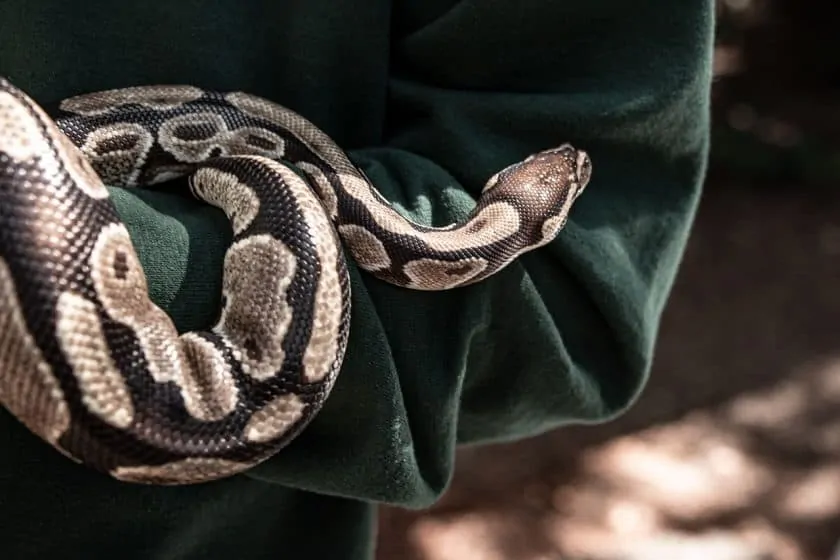
Recognizing Signs of Discomfort
Understanding your ball python’s body language is important in recognizing discomfort. If your python is tense, hissing, or striking, it’s feeling threatened. A relaxed python will have a loose body posture and may flick its tongue as it explores. If you notice signs of stress, give your python some time to calm down before attempting to handle it again.
Building a bond with your ball python isn’t just about handling it—it’s about creating a safe and enriching environment. Ensure its habitat mimics its natural surroundings with proper bedding, climbing structures, and controlled temperature and humidity. This not only makes your python feel at home but also strengthens the trust between you and your snake.\
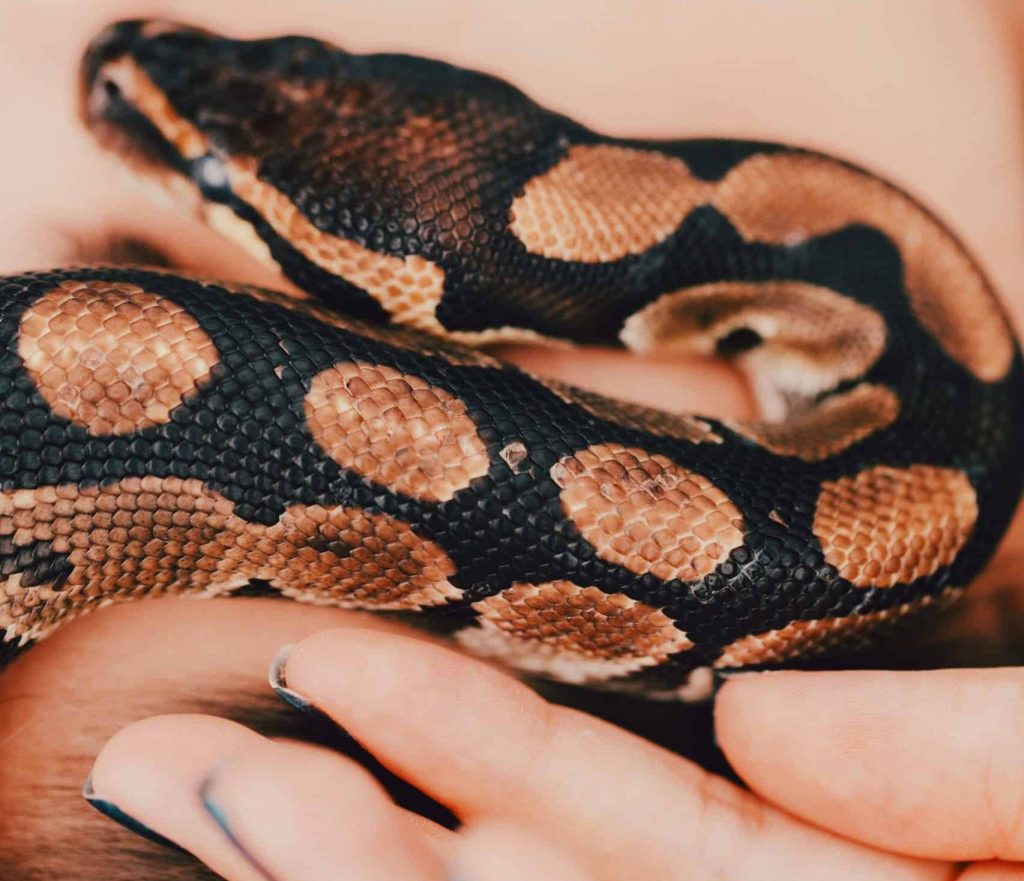
For more tips on calming agitated snakes and building trust, check out techniques for calming agitated snakes.
Health and Wellness of Ball Pythons
Common Health Issues and Prevention
Ball pythons are generally hardy, but they can still face health problems if not cared for properly. Respiratory infections are common, often due to improper humidity levels. Make sure to maintain a humidity level between 60-70% using a hygrometer. Mites are another issue, which can be prevented by keeping the enclosure clean and regularly checking your python. Weight loss, lethargy, and wheezing are major signs of illness.
Routine Health Checks
Regular health checks are key to keeping your ball python in tip-top shape. Look out for signs like mucus around the mouth or nose, abnormal skin or scale conditions, and changes in appetite. An annual vet visit is recommended to catch any potential issues early.
When to Consult a Veterinarian
If you notice any signs of illness such as unusual discharges or persistent lethargy, it’s crucial to consult a veterinarian immediately. Early intervention can prevent minor issues from escalating into serious health problems. Regular veterinary checkups are essential for maintaining your snake’s health.
Taking care of a ball python is relatively straightforward, but it requires vigilance and consistency. Keeping an eye on your snake’s behavior and physical condition can make all the difference in ensuring a long, healthy life.

Breeding Ball Pythons Responsibly
Understanding Ball Python Genetics
Ball pythons are a genetic marvel in the reptile world. Their wide range of color and pattern variations, known as “morphs,” makes them particularly fascinating to breeders. These morphs result from specific genetic traits that can be passed down through generations. If you’re considering breeding, it’s crucial to understand the basics of ball python genetics to predict and produce desired morphs. Breeding ball pythons responsibly means being informed about genetic health and avoiding overbreeding of certain traits that might lead to health issues.
Preparing for Breeding Season
Before the breeding season begins, both male and female pythons need to be in optimal health. This involves ensuring they are well-fed, free from illness, and of appropriate age and size. Ball pythons typically reach sexual maturity at around 3-5 years old. During the breeding season, which usually starts in the fall, you should gradually lower the temperature in their habitat to simulate natural conditions. This cooling period can trigger mating behaviors. Ensure you have a separate space ready for each snake after mating, as females will need to be isolated to lay their eggs.
Caring for Eggs and Hatchlings
Once the female lays eggs, it’s important to provide a stable environment for incubation. The eggs should be kept at a consistent temperature of around 88-90°F with high humidity. An incubator is often the best way to maintain these conditions. After about 55-60 days, the eggs will start to hatch. Hatchlings are particularly vulnerable, so they need a secure enclosure with proper heating and humidity. Offer them small, appropriately sized meals once they have shed their first skin.
Breeding ball pythons is not just about producing beautiful snakes; it’s about ensuring their health and well-being for future generations. Responsible breeding practices are essential to maintain the species’ genetic diversity and health.
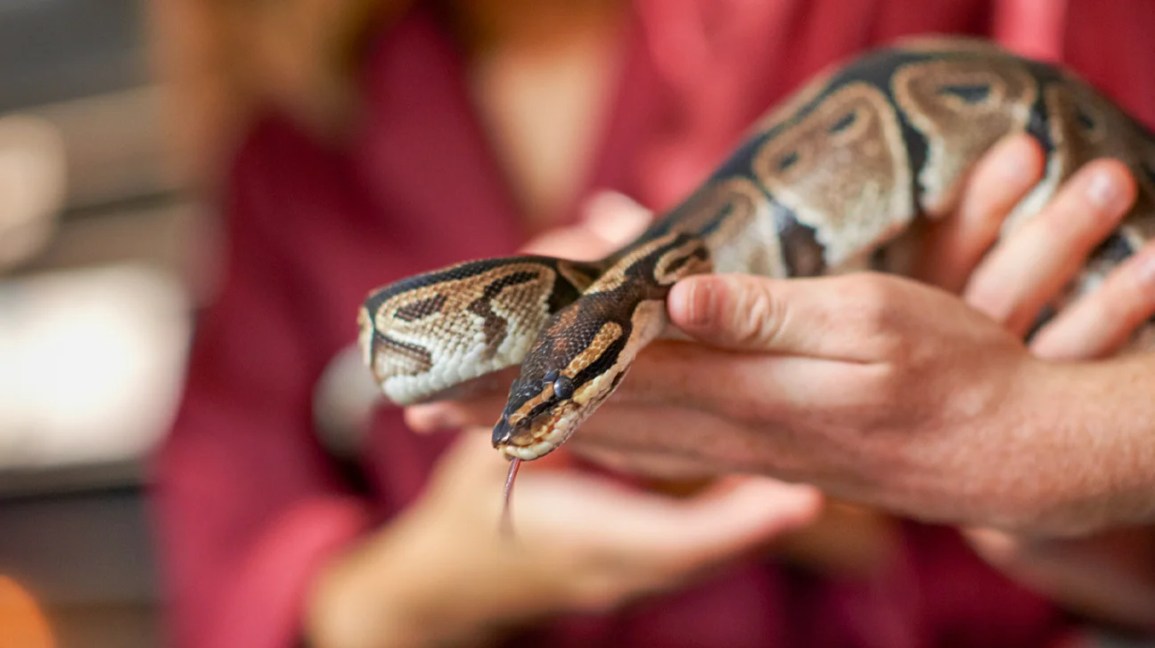
Choosing the Right Ball Python for You
Where to Buy a Ball Python
When you’re ready to welcome a ball python into your home, choosing the right place to buy is crucial. Consider reputable breeders or specialized reptile stores. These sources often provide healthier snakes and can offer insights into their care history. Avoid impulse purchases from pet stores that may not specialize in reptiles, as their knowledge and care standards might not be up to par.
Evaluating Ball Python Morphs
Ball pythons come in a dizzying array of morphs, which are variations in color and pattern. These morphs can affect the price significantly, with some rare types costing a pretty penny. Before deciding, research different morphs to find one that fits your preferences and budget. Remember, while the color might be appealing, the snake’s health should always be the priority.
Assessing the Health of a Ball Python
Ensuring your new pet is healthy is essential for a happy, long-lasting companionship. Here’s a quick checklist for assessing a ball python’s health:
- Clear Eyes: Ensure the python’s eyes are clear and bright, not cloudy or sunken.
- Smooth Skin: Check for smooth, shiny skin without any signs of mites or lesions.
- Active Behavior: A healthy ball python should be curious and active, not lethargic.
“Choosing a ball python is more than picking a pet; it’s about starting a journey with a fascinating reptile companion.”
By following these guidelines, you can find a ball python that not only meets your expectations in appearance but also thrives in your care. For more on setting up an ideal environment for your snake, make sure to explore our guide on creating the perfect habitat.
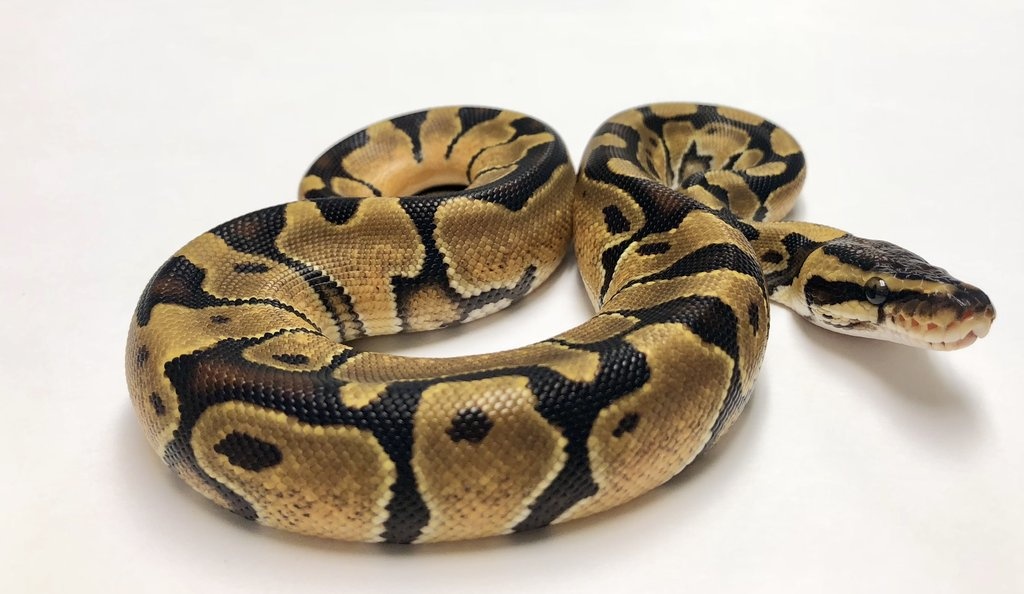
Wrapping It Up: Your Journey with Ball Pythons
So, there you have it! Ball pythons can be awesome pets if you’re ready to give them the care they need. They’re chill, don’t need a ton of space, and can live a long time if you treat them right. Just remember, like any pet, they come with their own set of responsibilities. Make sure you’re up for the commitment before bringing one home. With the right setup and a bit of patience, you’ll have a scaly friend for years to come. Happy herping!
Frequently Asked Questions
How big do ball pythons get?
Ball pythons usually grow to be about 3 to 5 feet long, with females generally being larger than males.
What should I feed my ball python?
Ball pythons eat mice or rats. It’s best to feed them pre-killed prey to prevent injury to the snake.
How often should I clean my ball python’s enclosure?
You should spot clean the enclosure regularly and do a full clean once a month to keep it hygienic.
Do ball pythons need a heat lamp?
Ball pythons need a warm environment, so a heat source like a heat lamp or under-tank heater is essential.
How often do ball pythons shed their skin?
Ball pythons shed every 4 to 6 weeks, but this can vary depending on their age and growth rate.
Are ball pythons good for beginners?
Yes, ball pythons are known for being calm and easy to handle, making them great pets for beginners.


